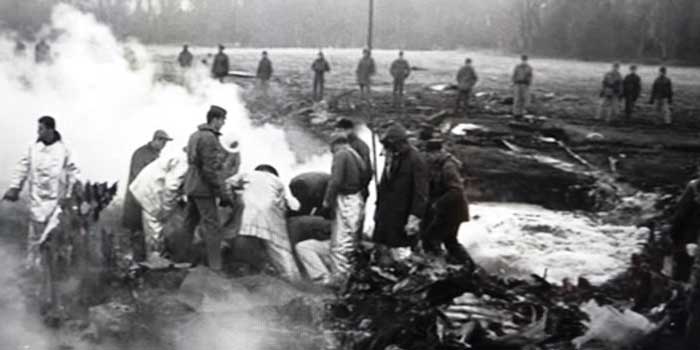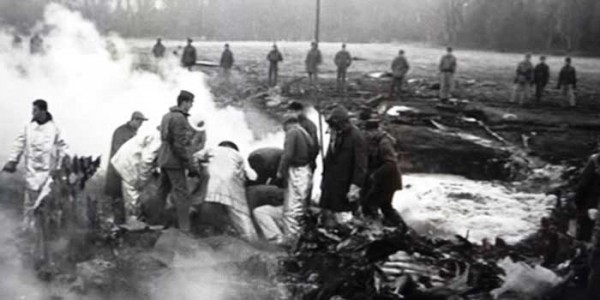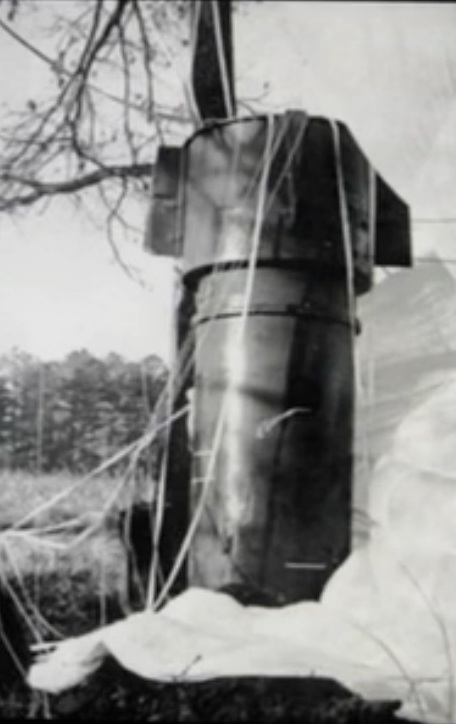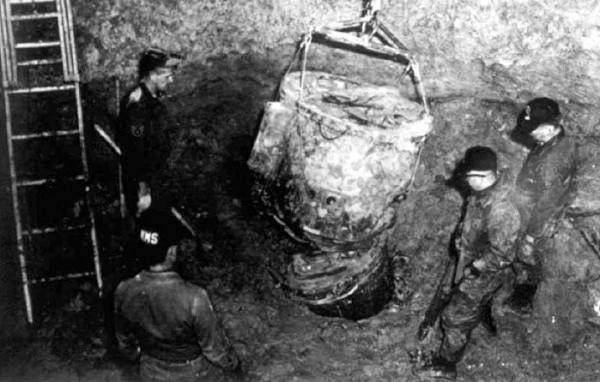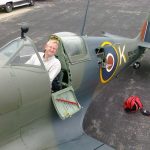Broken Arrow: two simple words which seem innocent enough, but when one knows they represent the code-word for a lost nuclear weapon, they are perhaps the scariest words you could ever contemplate. Given all the safeguards our military enacts to prevent such a thing from happening, it might surprise many to learn that there have been a few Broken Arrow cases over the years. Perhaps the most frightening Broken Arrow incident occurred over Goldsboro, North Carolina in 1961 when a B-52G bomber, carrying two massive Mk. 39 hydrogen bombs, came apart following structural failure in the right wing. The two 250 Megaton H-bombs spilled out of the shattered Stratofortress, tumbling to earth and partially arming themselves in the process. What happened next could easily have lead to global nuclear war if only a few things came out differently. This riveting story is told, with extensive additional details in Joel Dobson’s The Goldsboro Broken Arrow, 2nd Edition released in recent weeks.
Joel Dobson is a former Air Force officer who served in the Strategic Air Command during the 1960’s. His book describes the true story of the events behind that fateful B-52 mission at the build-up of SAC during the Cold War. It also tells of the potential aftermath, in the words of some experts, the largest man-made disaster in history—a huge nuclear explosion on American soil. Eyewitnesses to the crash at Faro have unique stories to tell, as well as the sole living member of the crew who miraculously survived without an ejection seat—a feat that fellow pilots say was not possible. There is also the story of the man who deactivated both 3.8 megaton monsters… One hanging from a tree by its parachute, the other buried in the ground. In 1983, Secretary of Defense Robert McNamara said of the Goldsboro bomb, “It ran through six or seven steps in order to detonate, and it went through all but one.”
In a quote from the book: “How close was it to exploding? My opinion is damn close. You might now have a large Bay of North Carolina if that thing had gone off,” said Dr. Jack B. ReVelle. He was the Explosive Ordnance Disposal officer who deactivated both thermonuclear bombs in 1961. If a detonation had occurred, it could have been the ‘tipping point’ of the closest we have ever been to accidental nuclear war.
As Dobson surmises, it is very possible that in the fog of the Cold War, any accidental nuclear detonation would have been misidentified not as a terrible accident, but as an enemy attack. The Commander-In-Chief of SAC at that time was General Thomas Power, who had the ‘pre-delegated authority’ to launch the nuclear force on his own if only two events occurred: a nuclear attack on America; and lost communications with the Joint Chiefs of Staff. Communication weaknesses such as the effects of EMP (electromagnetic pulse) were still being discovered at that time, so there was indeed at least a possibility that the ‘perfect storm’ was in place—near Goldsboro, North Carolina, in 1961….SAC’s airborne alert had just started: armed B-52s were in the air around the clock…and a commander with both the authority and the personal desire to go to preemptive war was in command of SAC, history’s greatest nuclear force.
This second edition of Dobson’s book has a lot of revisions due to freshly discovered details. For those who already own the first edition, who might be wondering what has been added to the latest version, Joel Dobson recently told Warbird News that…
If you are interested in buying this book you can purchase it on Amazon, click HERE.







